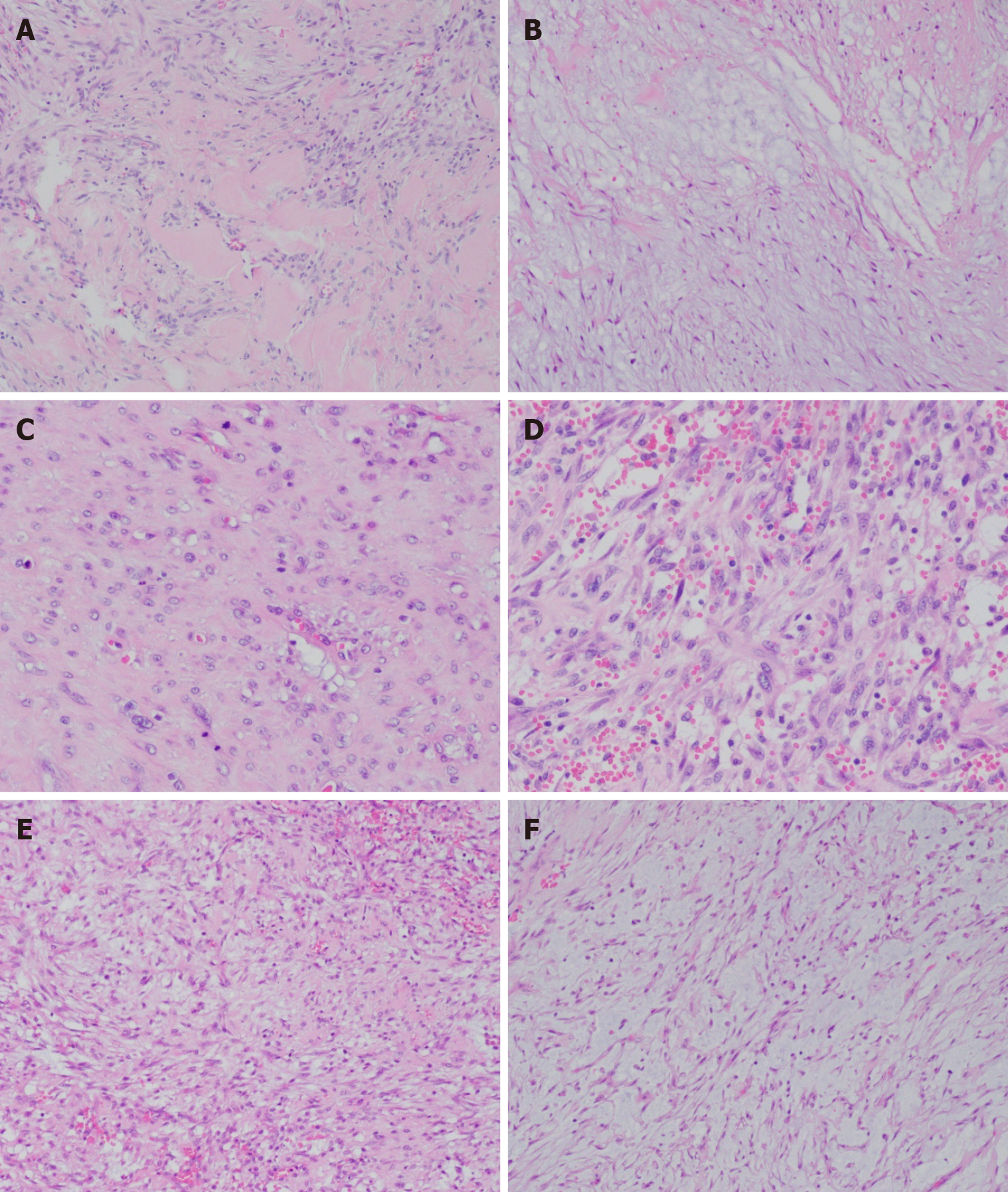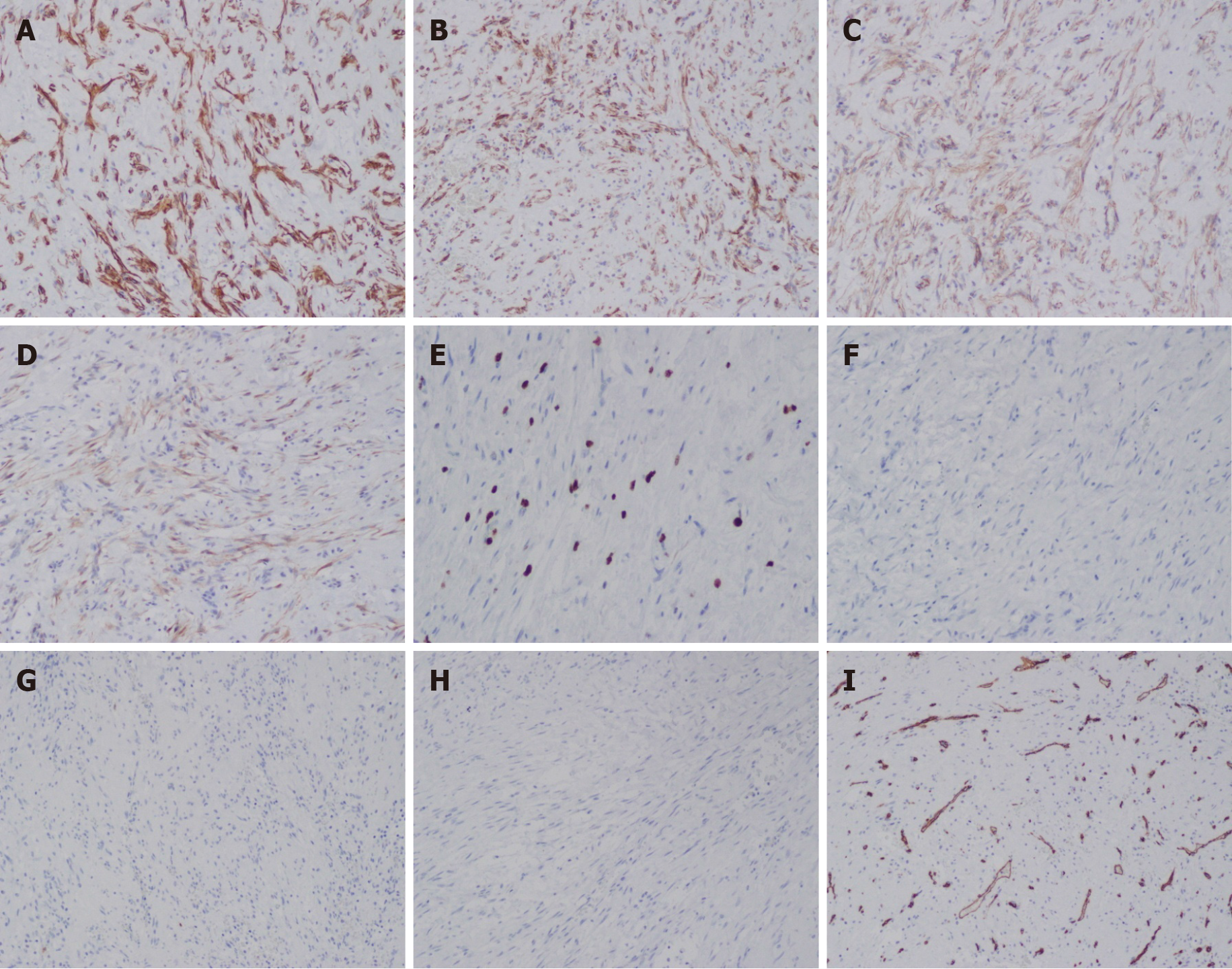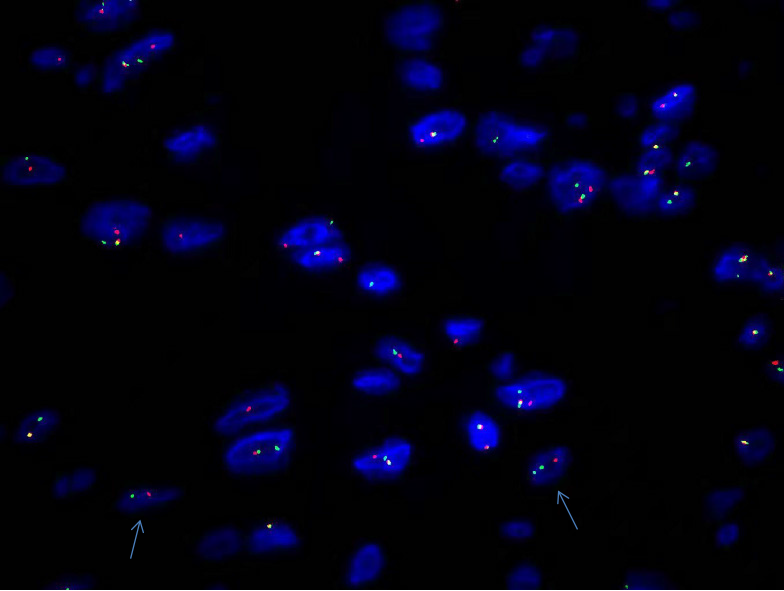Copyright
©The Author(s) 2022.
World J Clin Cases. Feb 16, 2022; 10(5): 1572-1579
Published online Feb 16, 2022. doi: 10.12998/wjcc.v10.i5.1572
Published online Feb 16, 2022. doi: 10.12998/wjcc.v10.i5.1572
Figure 1 Imaging and gross examination.
A: Magnetic resonance imaging showed patchy low signal in the medial humerus (T1WI); B: Magnetic resonance imaging showed a high signal intensity on the humerus, with local thinning of the humeral cortex (T2WI); C: The root of the mass extended laterally below the biceps brachii and was closely related to the humerus; D: The mass was nodular, with a diameter of 7.5 cm, a relatively clear boundary, and a reddish gray appearance on cross section.
Figure 2 Hematoxylin-eosin staining.
A: Localized fibrous tissue hyperplasia and hyaline degeneration [hematoxylin and eosin (HE), × 100]; B: Some areas showed extracellular mucoid matrix (HE, × 100); C: Mitotic figures (HE, × 200); D: Tumor cells are abundant and there is apparent extravasation of red blood cells (HE, × 200); E: Spindle-shaped and fibroblast-like tumor cells (HE, × 100); F: Spindle-shaped tumor cells with stromal mucous degeneration (HE, × 100).
Figure 3 Immunohistochemical staining.
A: Tumor cells stained positive for SMA; B: Tumor cells stained positive for CD10; C: The cytoplasm tested positive for β-catenin; D: Tumor cells stained positive for calponin; E: The Ki67 index was 10%; F: Tumor cells stained negative for desmin; G: Tumor cells stained negative for EMA; H: Tumor cells stained negative for S-100; I: Tumor cells stained negative for CD34 (EnVision, × 100).
Figure 4 Fluorescence in situ hybridization analysis showing a USP6 rearrangement as separated red and green signals.
- Citation: Yu SL, Sun PL, Li J, Jia M, Gao HW. Giant nodular fasciitis originating from the humeral periosteum: A case report. World J Clin Cases 2022; 10(5): 1572-1579
- URL: https://www.wjgnet.com/2307-8960/full/v10/i5/1572.htm
- DOI: https://dx.doi.org/10.12998/wjcc.v10.i5.1572












